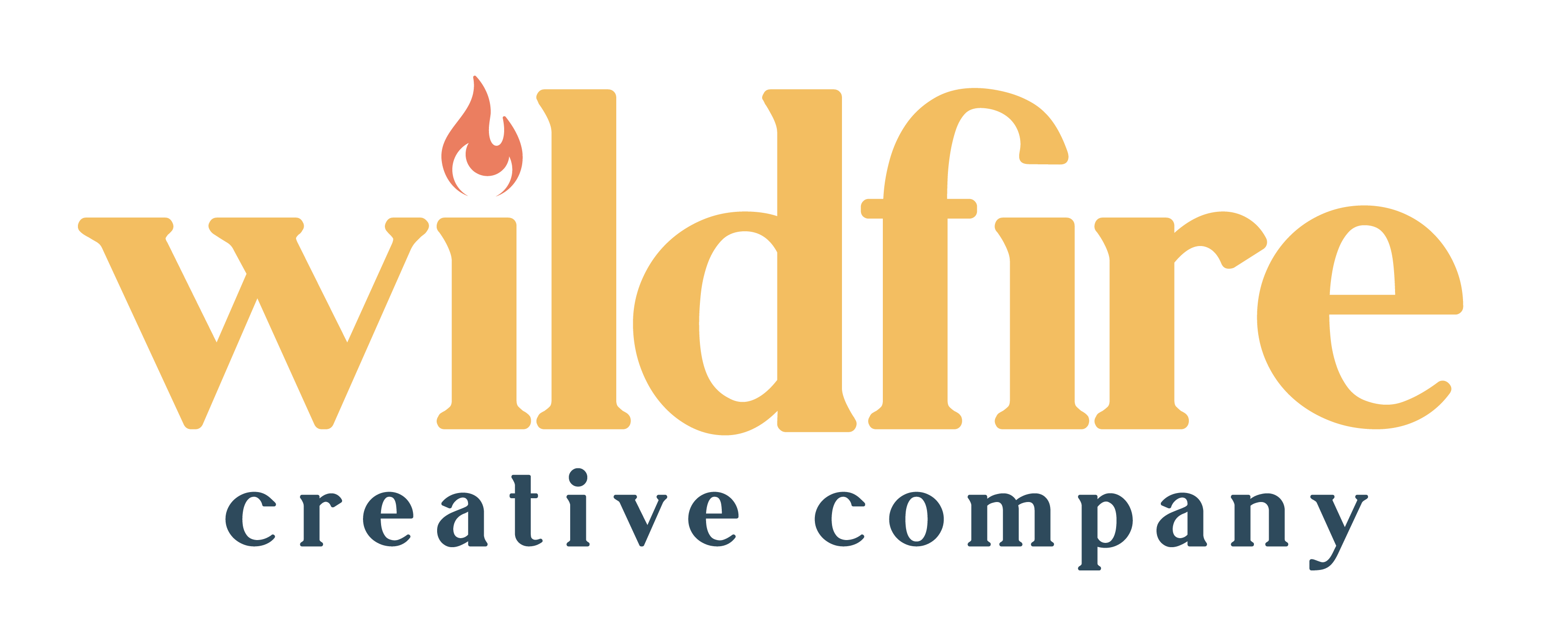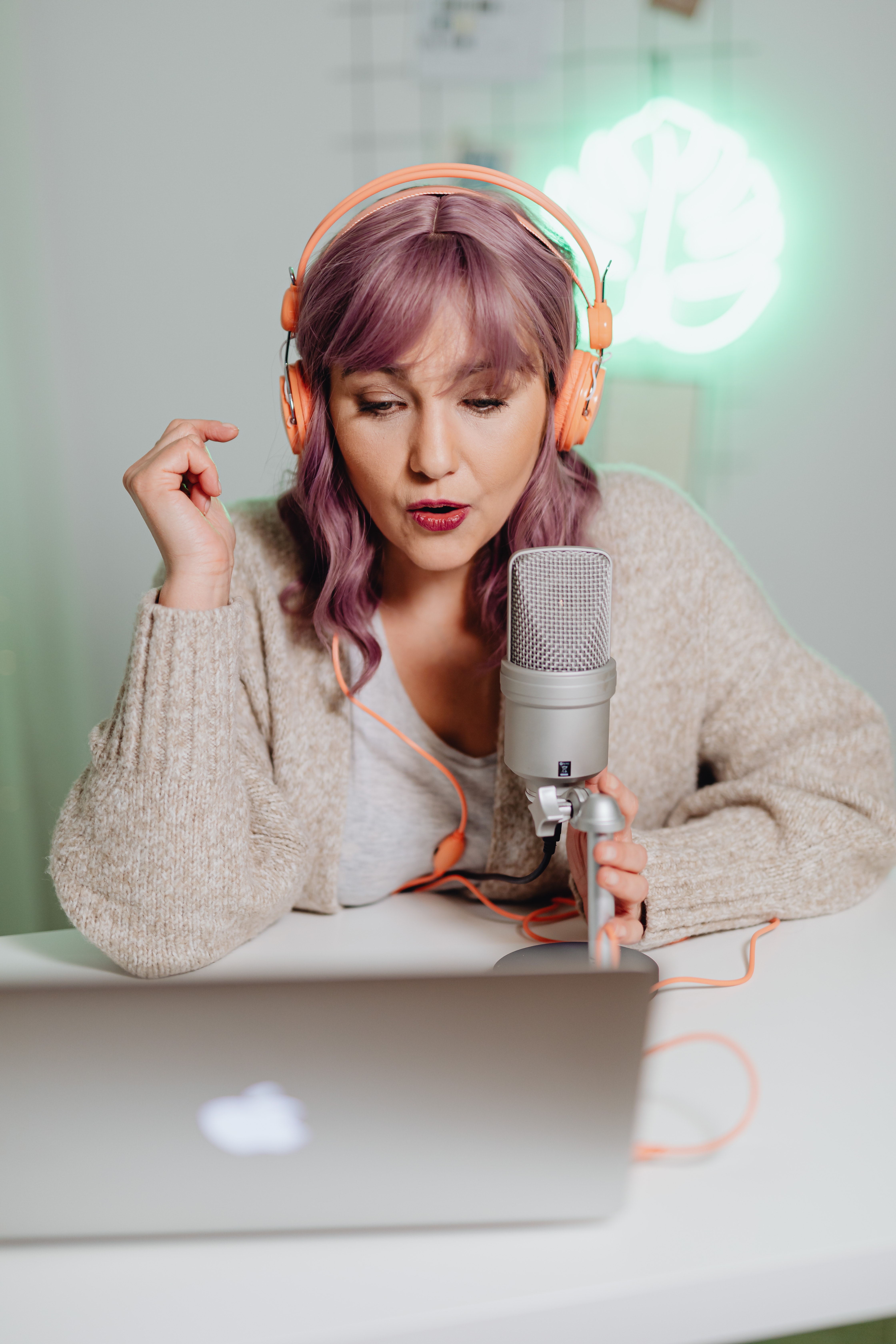7 Steps to Launch Your Podcast
As an Amazon Associate, I earn from qualifying purchases.
So let’s talk podcasting … more specifically, launching YOUR podcast.
This is a question we get A LOT here at Wildfire Creative! If that is a question on your mind as well, please keep reading as we walk you through the 7 steps of launching your podcast, from planning all the way to promotion. We also offer you some tips and tricks on best practices – so you get it right the first time. You don’t want to miss our tip on the #1 mistake most podcasters make and how to avoid it!
Let’s dive right on in, shall we?!
So before you move any further into the many details of how to create a podcast, we want you to start with WHY… Why do you want to start a podcast? Podcasting is fun, but it is also a lot of work. It’s a time commitment, especially if you want to consistently produce great content. Your “why” will help you get through the hard days of planning, producing, editing, and promoting.
Planning Your Podcast
Now that you have figured out your “why,” it is time to begin all things related to show planning. We are often asked, “how long should it take to develop your podcast in the beginning?”
Our answer = the podcast planning portion should take at least a month if you already have an audience, has written a book, etc. If starting from scratch, you should probably plan at least two months to finalize all these planning stages prior to launching your podcast.
Here are a few things to consider:
- Podcast Format:: Solo, cohost, interview-based, narrative/storytelling (to name just a few of the show format options available). You need to determine which one will be the best for you and your personality, + your audience.
Side note: Don’t worry that you might pick the “wrong” format… We guarantee your podcast will probably change over time so if you decide to move it to another format… well, you can totally do that! - Keyword Research:: use this when thinking about your title (research in your niche and then be sure to secure website and social media handles right away).
- Decide on Your Frequency:: Frequency is simply how often you plan to publish new episodes. Some podcasters schedule weekly episodes, while others publish new episodes biweekly or monthly even.
- Consider your Niche Topics & Episode Content.
- Set Goals for the podcast – always refer back to your why!
Things You Need For Your Podcast
Microphone
The #1 thing we want you to think about is your microphone. Be sure to use an external mic (not your computer’s mic, the mic on your headset, not a lapel-type mic). If you already have a microphone, that’s great, BUT if you are looking for a new one or upgrading your current one, these are the ones we recommend.
- Audio Technica – ATR2100x (a perfect mic if you are on a budget or don’t want to have a large financial investment in podcasting – this Audio Technica is a great entry mic)
- Rode Podcaster (a broadcast quality USB mic – the same one that Tammy currently uses)
You certainly don’t have to spend thousands of dollars to launch your podcast, so if anyone tells you otherwise, don’t just walk away…. RUN! You could easily launch your podcast for less than $100.
Headphones
You always want to record with headphones. If you are hiring an editor, your editor will thank you. Actually, if you are editing yourself, thank yourself.
We promise! Here’s why… So many sounds and outside factors can affect your audio quality. Without wearing proper headphones during the recording process, your naked ear may miss these sounds, which will cause issues in the playback and editing processes.
Below are links to a few we love to use….
You will need a few other pieces of equipment (plus a few we highly recommend).
- mic stand or boom arm to attach to your desk (to have your mic right in front of you when recording)
- pop filter/windscreen to prevent the plosives
- recording/editing software such as GarageBand or Audacity
COVER ART
For some reason, the cover art seems to really stress some people out, and it often seems to be because of all of the requirements Apple has in accepting artwork. Honestly, if you follow the recommendations of what they need on this link from Apple’s website (Cover Art Requirements Per Apple’s website), you will get approved every time.
Keep it simple. Canva has many great templates specifically designed with Apple’s requirements for podcast cover art that you could use to create your own cover art.
Recording
Your next step is recording your actual content. This is where many people get caught up because the microphone scares them. Y’all, don’t be afraid of the microphone… the microphone is your friend!
If you feel anxiety about using it, practice with it a few times to get comfortable talking into your mic and how you need to project your voice. When in the recording process, we suggest to everybody that if you make a mistake when you are recording, simply pause for a second, take a deep breath and then say it again. Anyone editing your podcast will thank you for the pause… even if that editor is you!
One other tip is to have a script with a few bullet points. We don’t recommend reading entirely from a script as people tend to talk faster when they are reading.
We also want you to think about drinking lots of water the day you are recording because you want your voice to be strong. Do some breathing exercises before you begin, and if you are really nervous about recording, do some exercise or do something physical to release that anxiety in your body before pressing that record button.
Editing & Production
You’ve recorded your show, so now it is time to edit. The one thing we say about editing is if you want to edit your podcast yourself … Fantastic!
Be Careful not to Overedit
By this, we mean… don’t take out all the crutch words such as you know, um, like, and so on because it doesn’t sound natural. Also, put yourself in the listener’s position when you are editing to consider if your content sounds good, is engaging, etc.
Please consider this for a moment as well… many podcasters think they have to edit because they don’t want to pay that fee to hire an editor. But think about this for just a second.
Let’s say it takes you 3 hours to edit a 30-minute episode.
It might take us here at Wildfire Creative a 1 to maybe 1 ½ hours tops to edit that same 30-minute episode, So if you were to pay us for those 1 ½ hours, consider what is the ROI/ the value of your time?
What could you be doing for your podcast in those 3 hours you usually take to edit your podcast… especially considering Wildfire Creative or others like us can do it for you in a much shorter amount of time? Sometimes our time is worth the money.
You also need to have a nice intro and outro when editing your show. Does the music in both go with the show? Please make sure the music you choose to use is royalty-free, such as on these sites we linked for you below, so that you don’t get into any copyright music situations.
Other things to consider
Royalty-Free Music
Whatever you do, ensure you have engaging content that your listeners will want to return for each episode. Once you have your final version of your episode, it is time to upload it to your hosting site for release across podcast platforms,
Hosting Suggestions
Just as you host your website, you also need a place to host your podcast audio files. Choosing the right podcast hosting software is essential. From pushing your podcast to Apple, Spotify, etc., to storing your files, the right podcast hosting can help grow your audience.
Here are our recommendations:
Show Notes
We recommend writing two versions of your show notes.
1. Apple Podcasts and other podcast directories = short, sweet, and to the point.
2. Website = longer version with links and all the additional things which are great SEO for your website.
Marketing & Promotion
If this is your first episode, tell everybody about it. Word of mouth, socials, emails… all the ways to all the people. We’re not kidding here… EVERYONE!
Here’s why… even if the person you are speaking to about your podcast is not interested in your topic, he/she may know someone else who is. Also, be sure to ask for feedback from your audience to be sure you are staying on track + providing the content that they really want to hear.
Want to know the #1 mistake that most new podcasters make? That is the level of expectation they have for their show.
As we all know, creativity is an internal game, and burnout often happens to podcasters when they have too high of expectations… when they see less than stellar results at the beginning (or even after multiple episodes), and they get discouraged + begin to believe that their effort isn’t paying off.
Unrealistic expectations create urgency and pressure that sooner or later often leads podcasters to give up.
Podcasting is a long-term game!
We often say Wildfire Creative is a marathon, not a sprint. Please don’t become a statistic of podfade, never to be heard from again. We often wonder where the shows of those who have given up would be right now if they had continued and stuck with it and were consistent over the long haul.
Truthfully, we can’t even begin to imagine how large their audience would be now had they stayed with it. Like we said, if needed, your show can change and evolve over time because we don’t want you to stop in this podcasting journey, so please remember that!
Remember, we realize that all these steps we have shared with you here are very surface level, but if you put in the work on the front end, we guarantee you it will be much easier down the road.
This is so true, especially when you are at episode 32, and things are hard (maybe a guest cancels on you or life gets hectic) and you have to decide then and there what you are going to do – you know your why, you know what your audience wants, so you just keep pushing forward.
You Can Do This!
We absolutely believe you can do this, and all of us here at Wildfire Creative is by your side to help you. We are always here to answer your podcast launch questions, so please be sure to reach out to our team by emailing hello@wildfirecreativecompany.com.
Amazon and the Amazon logo are trademarks of Amazon.com, Inc, or its affiliates.

